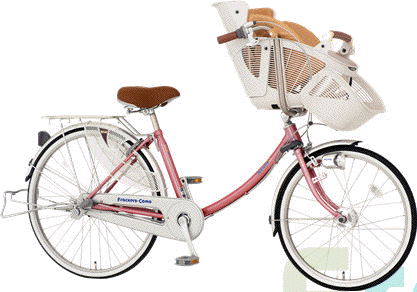
|
|
|
|
Ads by Infohub Partnership with TGCT Mutual Support with JCA |
MamachariSome foreigners are surprised to see many people use bikes as daily transportation device in Japan. What play the principal role in that is a bike called Mamachari. "mama" menas mom of course, and "chari" menas bicycle (vulgarly speaking). It exudes an image of nonworking mothers who overstrain their bikes everyday for heavy shopping, overloading with children. But the truth is that dads, elders, the young and children, anybody handily rides mamachari. Typical Mamachari has bended top tube so that make it easy to step over, front basket, rear rack, mud guards, dynamo lighting, chain cover and stands. Also it has 650A size wheels and woods (Dunlop) valves which are not mainstream today in the world.
Mamachari is not originally Japanese, but developed independently from the original style. Fracker's Como is a example. Como has a child seat on a stem. You must be surprised it has very smooth handling even a child is on it. Also the handle can be fixed when parking, to prevent a handle shaking under child's weight. Como enjoyed a good sale despite it's higher price as Mamachari. Then other manufacturers followed it. Typical Mamachari costs about 20,000 yen, cheaper one is about 10,000 yen. By this handy price range, Japanese people tend to think Mamachari as if they are disposable articles. They'd buy a new bike rather than repairing old one, they'd not so despair if their bike was stolen. Thieves have little sense of guilt. This vicious circle causes some social issues like illegal parking and recycling issues. Also that price range doesn't seem to be unconnected with the bad manner of Mamachari bikers. They get the idea that the bike is an extension of shoes. They have no earthly idea that bikes are in a class with cars. Anyway Mamacnari is the key to understand the relationship between bikes and Japanese people. Looking at them must be interesting for you foreigners. uploaded:24, 12, 2006 |
|
|
|
Copyright "Japan Cycling Navigator". All
rights reserved.
|



